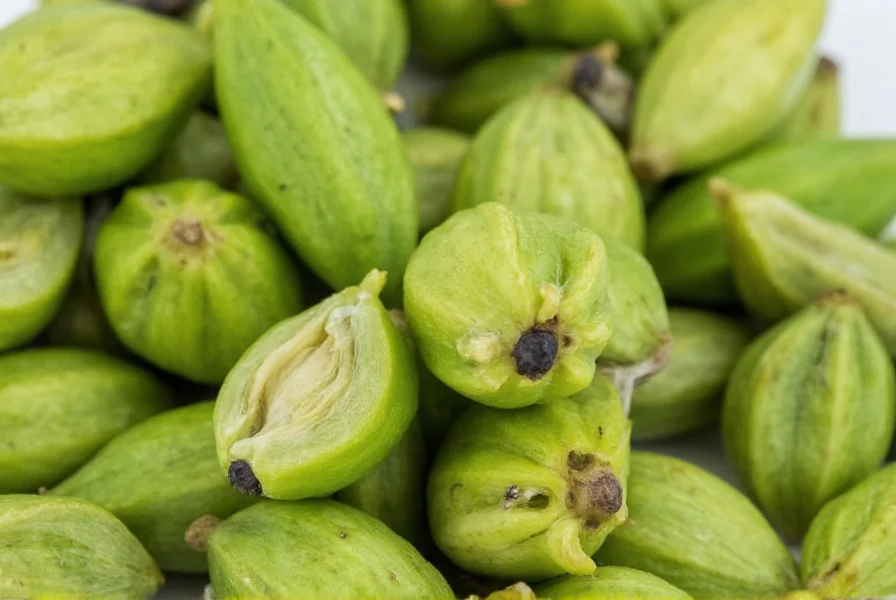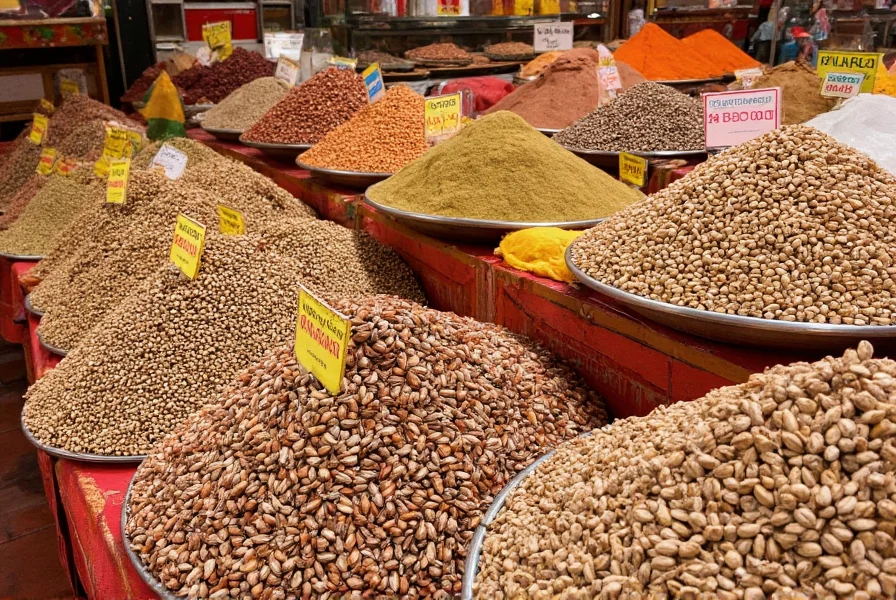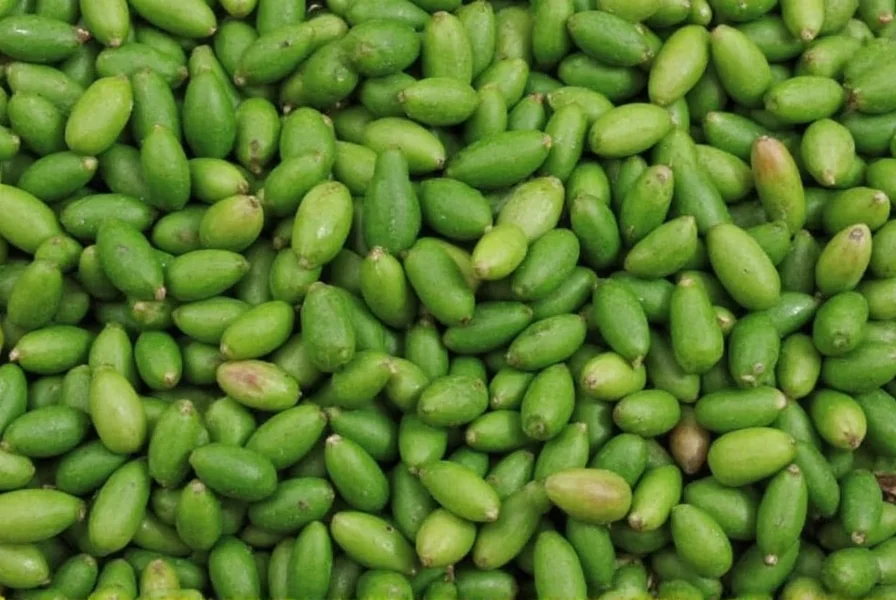Understanding the complete meaning of cardamom requires exploring its multifaceted significance beyond the basic dictionary definition. This ancient spice carries rich historical, cultural, and botanical dimensions that have shaped its enduring importance worldwide.
Etymological Roots of Cardamom
The word \"cardamom\" traveled through multiple languages before reaching English. It began as Sanskrit \"krtdmama,\" then evolved into Greek \"kardamomon,\" Arabic \"hal-tihan,\" and eventually Old French \"cardemome.\" Linguists believe the Sanskrit term combines \"krt\" (cress) and \"dmama\" (seed), describing its physical appearance. This etymological journey reflects cardamom's historical trade routes from India through the Middle East to Europe.
| Language | Term | Approximate Era |
|---|---|---|
| Sanskrit | krtdmama | 2000 BCE |
| Greek | kardamomon | 4th century BCE |
| Arabic | hal-tihan | 7th century CE |
| Old French | cardemome | 13th century CE |
| English | cardamom | 14th century CE |
Botanical Definition and Varieties
Cardamom meaning extends to its precise botanical classification. True cardamom belongs to the genus Elettaria, with Elettaria cardamomum being the most common species. This perennial herb grows 2-4 meters tall in tropical climates, producing distinctive triangular seed pods. Two primary varieties exist:
- Green cardamom (Elettaria cardamomum): Considered the \"queen of spices,\" with delicate, citrusy flavor
- Black cardamom (Amomum subulatum): Larger, smokier pods used in savory dishes
Understanding what cardamom means etymologically helps distinguish it from \"false cardamoms\" like Bengal cardamom (Amomum cardamomum) and Vietnamese cardamom (Amomum compactum), which belong to different genera despite similar appearances.

Cultural Significance Across Civilizations
The cardamom spice meaning in different cultures reveals its profound historical importance. Ancient Egyptians used it for oral hygiene, chewing the seeds to freshen breath. Vikings introduced cardamom to Scandinavia during their Eastern trade expeditions, where it became integral to Nordic baking traditions. In India, cardamom holds sacred status in Ayurvedic medicine and religious ceremonies.
In Middle Eastern coffee culture, cardamom isn't merely a flavoring but a symbol of hospitality. The traditional preparation of Arabic coffee with cardamom represents generosity and welcome. This cultural context transforms cardamom from a simple spice to a meaningful social ritual.
Symbolic Meanings Throughout History
Exploring the symbolic meaning of cardamom in ancient traditions reveals surprising dimensions. In Ayurveda, cardamom represents balance between the three doshas (bodily humors). Ancient Greeks associated it with protection and purification, often burning it as incense. Some Nordic folklore considered cardamom pods good luck charms for travelers.
The historical significance of cardamom extends to economic symbolism. During the spice trade era, cardamom rivaled gold in value, earning the nickname \"green gold.\" This economic importance shaped trade routes and influenced colonial expansion, adding political dimensions to its meaning.
Modern Interpretations and Uses
Today's cardamom definition encompasses both traditional and contemporary applications. Beyond its culinary role in chai, Scandinavian pastries, and Middle Eastern rice dishes, modern research explores cardamom's potential health benefits. Studies suggest antioxidant, anti-inflammatory, and digestive properties, reviving interest in its medicinal applications.
The cardamom cultural significance across civilizations continues to evolve. In contemporary wellness culture, cardamom appears in natural toothpastes, essential oils, and herbal remedies, bridging ancient traditions with modern health trends. This evolution demonstrates how the meaning of cardamom adapts while maintaining its core identity.

Common Misconceptions About Cardamom
Several misunderstandings cloud the true cardamom meaning. Many believe all cardamom is interchangeable, but green and black varieties serve distinct culinary purposes. Another misconception claims cardamom originated in Scandinavia, when historical evidence confirms its Indian origins. Some also confuse cardamom with similarly named but unrelated spices like \"alligator pepper.\"
Understanding these distinctions matters because using the wrong variety can dramatically alter a dish's flavor profile. The historical significance of cardamom includes precise traditional applications that modern cooks sometimes overlook in favor of convenience.
Conclusion: The Multidimensional Meaning of Cardamom
Cardamom meaning transcends simple dictionary definitions. It represents a confluence of linguistic evolution, botanical specificity, cultural tradition, and symbolic significance. From its Sanskrit etymology to its role in contemporary cuisine, cardamom carries layers of meaning that have accumulated over millennia.
Whether examining cardamom spice meaning in different cultures or exploring its historical significance across civilizations, one truth emerges: this \"queen of spices\" continues to captivate through its complex aroma, versatile applications, and enduring cultural relevance. Understanding cardamom requires appreciating all these dimensions that contribute to its rich, multifaceted identity.
Frequently Asked Questions
What is the literal meaning of cardamom?
The literal meaning of cardamom traces to Sanskrit 'krtdmama,' which translates to 'cress-like seeds.' The term evolved through Greek 'kardamomon' and Arabic 'hal-tihan' before becoming 'cardamom' in English. This etymology reflects both the physical appearance of the seeds and the historical trade routes that carried this spice across civilizations.
Why is cardamom called the queen of spices?
Cardamom earned the title 'queen of spices' due to its exceptional value, complex flavor profile, and historical importance. Ancient traders valued it more highly than gold, and its delicate, citrusy aroma distinguishes it from stronger spices. Unlike many spices that dominated trade routes, cardamom maintained its premium status across multiple civilizations, from Indian Ayurveda to Scandinavian baking traditions, earning its regal designation.
What's the difference between green and black cardamom?
Green cardamom (Elettaria cardamomum) has a delicate, citrusy flavor and is used primarily in sweet dishes and beverages. Black cardamom (Amomum subulatum) has a smokier, camphorous taste and works better in savory applications. Green cardamom comes from smaller plants in moist tropical forests, while black cardamom grows on larger plants in cooler mountainous regions. Their chemical compositions differ significantly, making them non-interchangeable in traditional recipes.
How has cardamom's meaning evolved throughout history?
Cardamom's meaning has evolved from a sacred Ayurvedic medicine in ancient India to a symbol of hospitality in Middle Eastern coffee culture, then to a key ingredient in Scandinavian baking traditions. Historically valued as 'green gold' during spice trade eras, modern interpretations focus on its potential health benefits and gourmet culinary applications. Despite these shifts, cardamom has consistently represented quality, hospitality, and cultural connection across civilizations for over 4,000 years.
Is cardamom mentioned in historical religious texts?
Yes, cardamom appears in several historical religious texts. Ancient Ayurvedic scriptures from India (dating to 1000 BCE) document its medicinal uses. The Talmud references cardamom as one of the spices used in the sacred incense of the Jewish Temple. Some scholars believe cardamom may be among the 'sweet spices' mentioned in Exodus 30:23 of the Bible. In traditional Islamic medicine, cardamom features prominently in texts by Avicenna and other medieval scholars.











 浙公网安备
33010002000092号
浙公网安备
33010002000092号 浙B2-20120091-4
浙B2-20120091-4